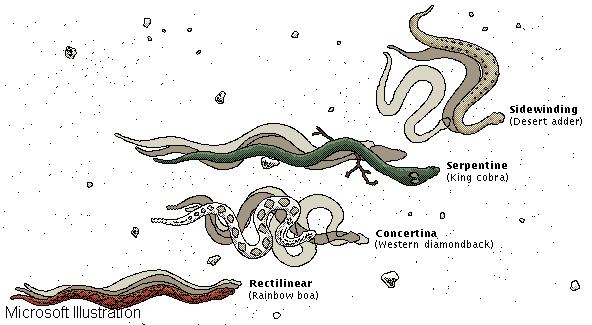

Of the four ways in which snakes can move, serpentine locomotion, a simple crawl, is the most common and the fastest. The snake contracts its muscles to produce a series of waves in its body, pushing from the back of each wave to move forward. Snakes also use serpentine locomotion to swim. In rectilinear, or caterpillar, movement, a heavy snake uses enlarged belly scales to grip the ground. Rectilinear movement is especially useful for moving through narrow burrows. Both rectilinear and concertina movement, a third method in which the snake pulls itself forward by bunching and lengthening its strong muscles in a springlike manner, are useful for climbing. The least common kind of locomotion is that of some desert-dwelling snakes. Called sidewinding, this motion involves lifting a loop of the body clear of the ground as the snake moves sideways. Sidewinding keeps the snake from slipping in loose sand.
